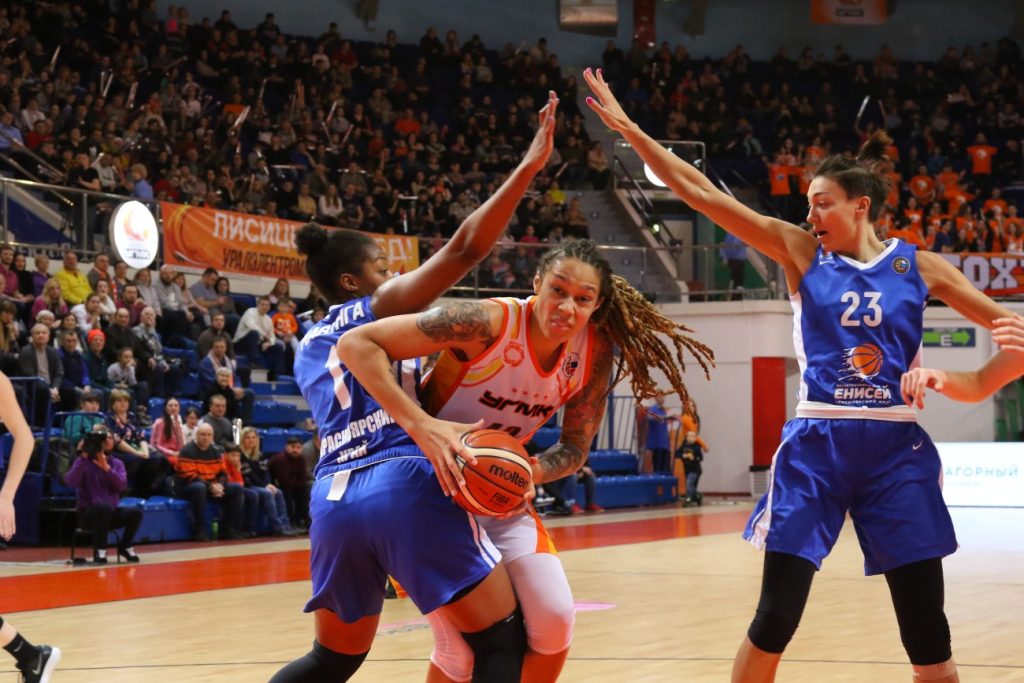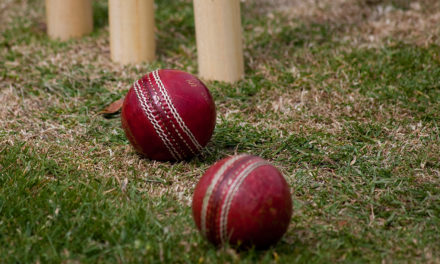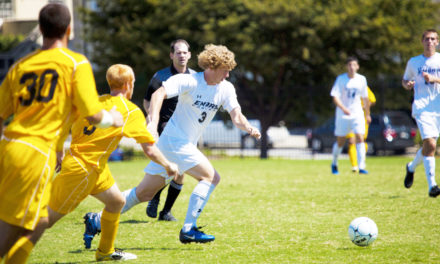
WNBA center Brittney Griner looks to score against defenders while playing for the Russian professional team UMMC Ekaterinburg. (Courtesy of Wikimedia Commons/УГМК)
This is the third of a series of articles for Women’s History Month spotlighting female empowerment through sports.
LeBron James is arguably the best basketball player of all time. James makes $41,180,544 a year just based on his salary alone, making him one of the highest paid NBA players. That’s the equivalent of about $21,000 per hour for a 40-hour workweek.
Diana Taurasi is one of the best female basketball players of all time. Taurasi makes $228,094 per year making her one of the WNBA’s top paid players. That’s the equivalent of $120 per hour for a 40-hour workweek.
Unequal pay is a key issue in gender discrimination in sports, but women also face unequal recognition for similar accomplishments. Everyone knows LeBron James, but most people have probably never heard of Diana Taurasi. Women make up 40% of all athletes in the world, yet only receive four percent of sports media coverage. Female role models are crucial for young female athletes, and many girls struggle to see that their dreams are possible with such little media attention.
As a young female athlete, I am very aware of how poorly female athletes are treated compared to male athletes. My dream was always to become a professional athlete, a dream shared by most athletes when they are young. But sadly, this dream faded away as I grew up and became aware of the limited opportunities offered to female athletes. Even many of the opportunities that do exist do not offer a feasible career financially.
Jessica McDonald, a professional women’s soccer player on the U.S. Women’s National Team (USWNT), said that she had to work for Amazon packing boxes for 10 hours a day while training young children and going to her own practices just to earn a sufficient income to raise her son. Fortunately, McDonald is a part of the group of women on the USWNT that sued the U.S. Soccer Federation for unequal pay which resulted in a $24 million settlement this past February. However, it has been a long journey for these female athletes to get reparations.
More recently, seven-time WNBA All-Star and two-time WNBA Defensive Player of the Year Britney Griner has been detained in Russia for having vape cartridges containing the marijuana concentrate hashish oil in her luggage. Griner had been playing overseas in Russia during her offseason to make extra money, and now she is in custody in a country that is currently at war. In 2021, Griner made a little over $221,000 on the WNBA team Phoenix Mercury, while her Russian team, UMMC Ekaterinburg, where she’s played since 2014 pays millions. Diana Taurasi reportedly made $1.5 million playing for the team in 2015. Griner’s detainment in Russia was quickly forgotten by most while she remains in custody with an uncertain future.
This is in stark contrast to when LiAngelo Ball, then a University of California, Los Angeles basketball player and now a current NBA G League player, was detained in China for shoplifting along with two of his teammates. They were bailed out of jail in less than a day and flown home as President Trump took credit for their return to the United States. Ball’s extraction from China took a few days whereas Griner has been left in Russia with accompanying silence from the United States media.
In addition to unequal pay and recognition, unequal conditions are also fairly common in women’s sports. In March 2021, the NCAA was exposed for their unfair treatment of female athletes during the NCAA Tournament. Players posted on social media to share the differences between the men’s and women’s merchandise, weight rooms and meals. For example, the women’s weight room had a small rack of dumbbells along with a few yoga mats, while the men had a large weight room filled with squat racks. This year, the NCAA made sure to provide equal resources, but it took public pressure to cause this change.
There have been huge advancements in equality for women’s sports over the years. Title IX was passed in 1972 for equal funding and athletic opportunities. The creation of the Women’s Foundation in 1974 by female tennis icon Billie Jean King was another milestone in supporting women’s participation in sports. Also, the settlement for the USWNT and equal pay was a huge step for equality.
However, there is still a long way to go for equality. A large pay gap between male and female athletes, unequal conditions and unfair media coverage still persist.
My women’s soccer team assistant coach at Emory University, Catherine Whitehill, is a female athlete legend. She was a star of the University of North Carolina, Chapel Hill team, helping them earn NCAA Division I national titles in 2001 and 2003. Whitehill was a 10-year member of the USWNT, ultimately helping Team USA win the gold medal at the 2004 Olympic games.
“The women of today are entering this whole new realm of possibility to have equal pay, to stand up for themselves,” Whitehill said in an interview with the Wheel. “I want to encourage that because we need more female voices out there.”
Whitehill also discussed that playing professionally was always a dream of hers and her teammates, but that the opportunity was not always there. Whitehill wanted change for future generations and improvements with Title IX, and that was one of the reasons why she spoke in front of Congress with athletes like Billie Jean King, gymnast Dominique Dawes and softball player Jennie Finch.
For true change to happen, laws need to be implemented. The Equal Rights Act (ERA) was passed by the Senate in 1972 and sent to Congress, but was never ratified and included in the U.S. Constitution. The ERA was designed to guarantee equal legal rights for all American citizens regardless of sex. Without the ERA, women are not guaranteed equal rights to men by the U.S. law. Women have had to work so hard to just be able to play sports, but they are not getting the attention, pay or conditions that they deserve.
Being a female athlete, I have been discouraged to see my female athlete role models working so hard, but getting paid a fraction of the men’s salaries. However, there are female athletes that I look up to, such as my coach Catherine Whitehill, that inspire me. The opportunity to lead and be a part of change makes me excited for the future of female sports. I remember being a kid and getting asked the million-dollar question, “what do you want to be when you grow up?” Grown-ups would laugh when I would say, “a professional women’s athlete.” Hopefully, there comes a day when a young girl would not get laughed at for wanting this career. I hope my childhood dream of making a career out of my favorite sport will be a viable option for generations to come.
Grace Reyer (she/her) (24B) is from Croton on Hudson, New York, on the business track with concentrations in environmental management and film and media management. Reyer is also a member of the Emory Women’s Soccer team, and an avid fan of both LeBron James and Megan Rapinoe. Aside from athletics, Reyer also loves to travel, paddleboard, and hike.





